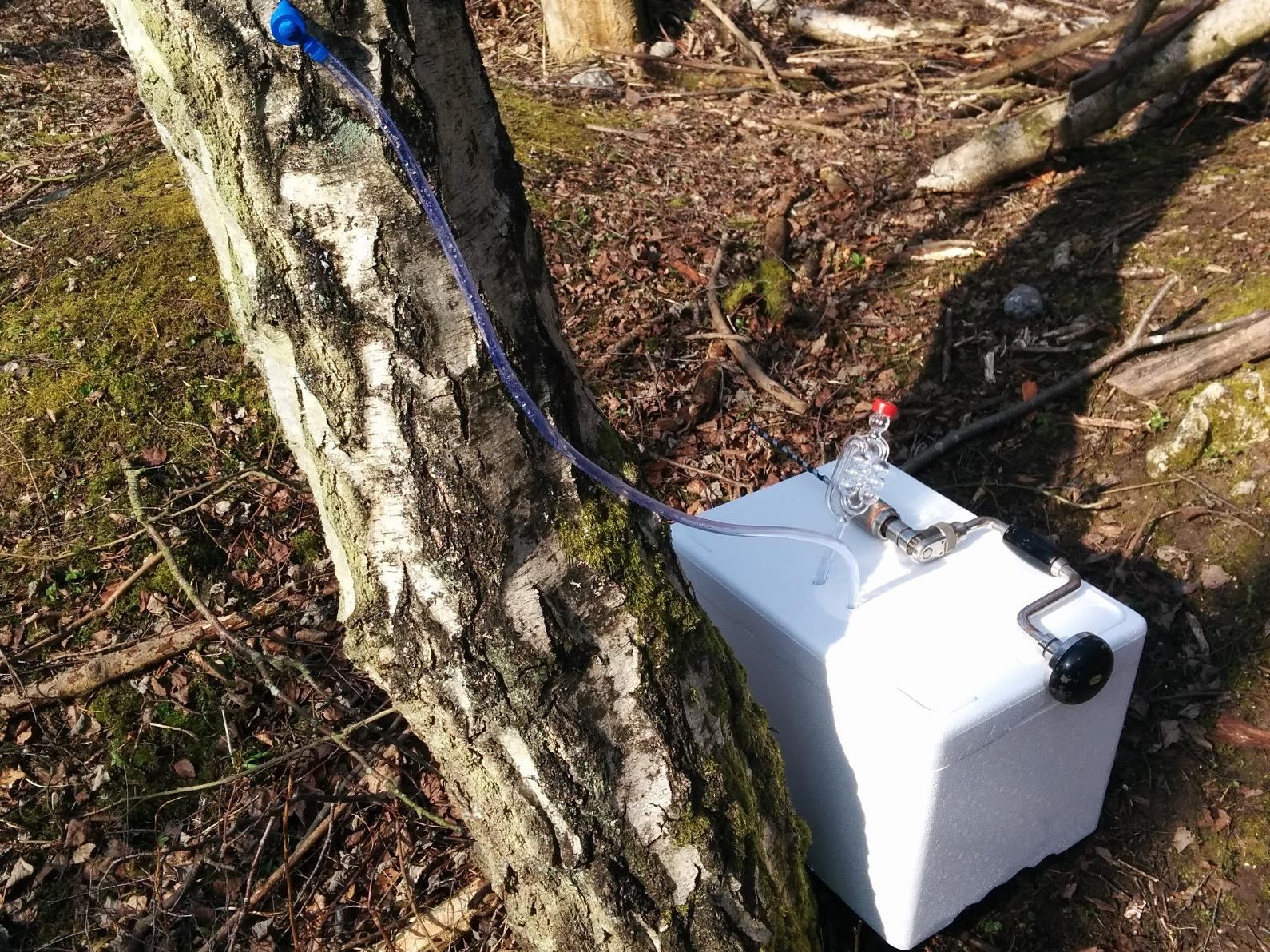The Lady of the Woods weeps...
There are only around two-weeks in March-April when the sap of the silver birch tree (Betula pendula) flows, signalling the end of winter and the start of spring. It's an almost apologetic gesture from Mother Nature, after a long hard winter comes a burst of sweet, sugary liquid. It is thus appropriate that in folklore the birch tree has long been associated with transitions and new beginnings.
In some Native American groups where the maple tree is more common this same period of spring is referred to as 'sugar month' or 'maple moon' (where in some cases maple sugar makes up 12% of the population's diet). Comparing the proportions of different sugars in maple and birch saps in Poland revealed that whilst maple (Acer spp.) was comprised entirely of Sucrose, birch sap was a mixture of Sucrose, Fructose and Glucose; and slightly less sweet than maple in general (Luczaj, Bilek and Stawarczyk, 2014).
In the Czech Republic and Ukraine the month of March is called 'brezen/berezen' – the month of birches, and in Belarus; 'sakavik' – the month of sap. In fact, this culture of birch sap runs throughout Eastern European social history; a popular folk group from Belarus 'Pesnyary' recorded a song in the 1970s called 'Birch Juice' which told the story of a man working outside of his homeland remembering his childhood days in the USSR drinking birch sap; which came to symbolise love for the Motherland. To this day Eastern European countries still have an active birch sap market; and it remains their most lucrative non-timber forest product (Svanberg et al., 2012). Whilst the economic value of maple sap to the North American market is obvious to anyone who has ever sat down for some pancakes. This is evidenced by the industry's desire for agricultural innovation to continue to grow in spite of threats to production as a result of climate change; see this approach out of the University of Vermont whereby sap is extracted from saplings .
The uses of birch sap are varied and wide; it can of course be consumed fresh from the tree – although it only lasts a few days before spoiling – it can also be frozen, and many alcoholic beverages are made by fermenting it. The popular Slavic drink kvass can be prepared with birch sap in a closed vessel with rye bread, oak bark, cherries and dill stems (and check out Ben Law's recipe for birch sap wine here). The reported health benefits are similarly varied; the Italian botanist Pietro Andrea Mattioli spoke of its medicinal properties in 1561 in relation to the treatment of kidney stones, bladder problems and ulcers (Luczaj, Bilek and Stawarczyk, 2014). According to Scottish folk medicine it was used in combating baldness; and one of its keen consumers for this reason was Queen Victoria when she frequented Balmoral Castle. In the 1940s the traditional harvesting of birch sap in the Highlands ended. However, the direction our shared consciousness in the developed world in regards to diet and health is taking us is also returning us to some of these sites of glorious amber flow. This imperative - though seemingly a 'new' health fad - is once again allowing us to meet with nature's offerings and partake in an age-old tradition of welcoming in new beginnings.
So, knowing all of this – the world of birch sap really is at your fingertips; and a polite tap away. And by polite, studies have shown that there is no benefit to drilling any deeper than 1.5 – 2 inches to obtain an optimal flow (Wilmot, T., 2014, Cascio, J. and Barber, V., 2014). There is a reason we show respect; the Lady of the Woods is weeping; so wipe away her tears and she will thank you again next year.
TRY: Freshly tapped Birch sap available from our shop...
References
Cascio, J. and Barber, V. Backyard Birch: Tapping and Syrup Basics (https://www.uaf.edu/drumbeats/ethnobotany/archives/FNH-00150.pdf), revised: July 2014.
Luczaj, L., Bilek, M. and Stawarczyk, K., 2014. Sugar content in the sap of birches, hornbeams and maples in southeastern Poland. Central European Journal of Biology, 9(5): 410-416.
Svanberg, I., et al., 2012. Uses of tree saps in northern and eastern parts of Europe. Acta Soc Bot Pol 81(4): 343–357.
Wilmot, T., 2014. Testing tapping depth vs. sap yield. The Maple News, 13(9): 9-11.

